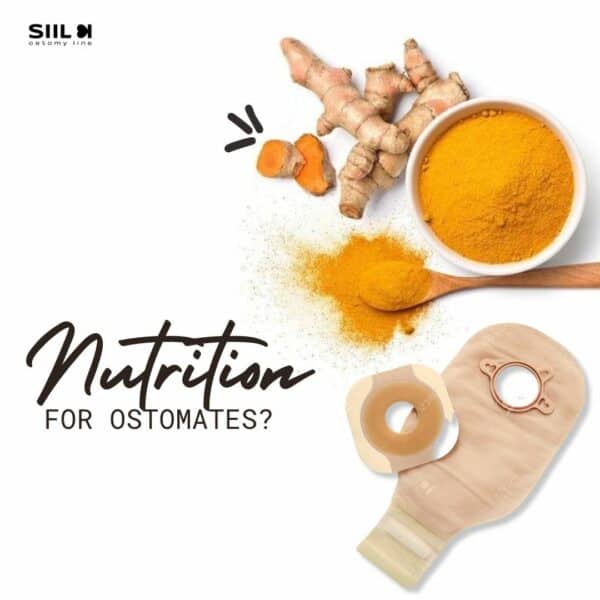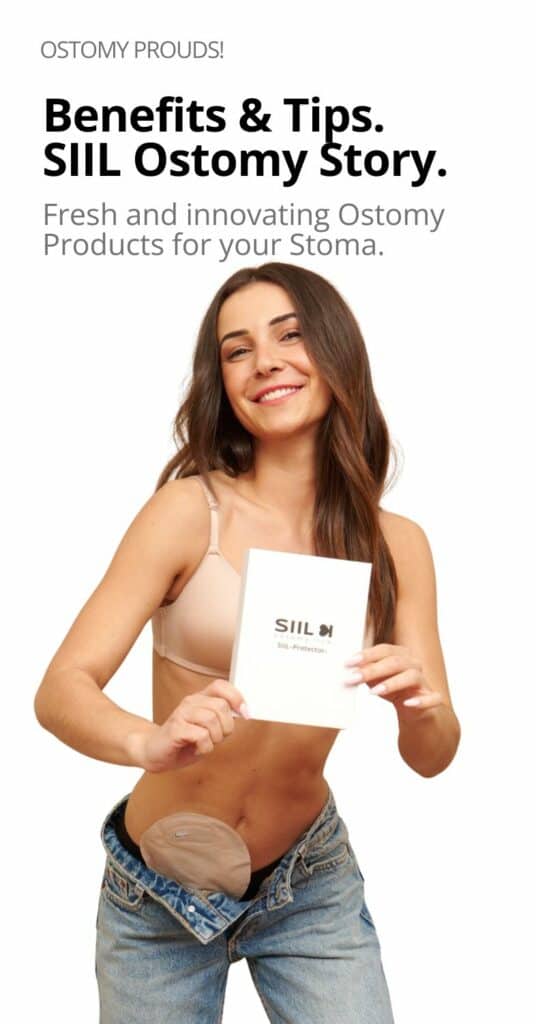FREE DELIVERY IN USA OVER $120
FREE DELIVERY IN EUROPE OVER $100
Taking care of an ostomy involves both understanding and attention to detail to ensure both comfort and proper function. Proper ostomy care is crucial for those who have undergone a surgical procedure that creates a stoma, an opening in the body for the discharge of body wastes. One of the first steps in ostomy care is to choose the right ostomy pouching system.
This choice depends on the type of stoma, its location, and personal preference. It’s important to ensure a good seal between the stoma and the pouch to prevent leaks and skin irritation.
Additionally, maintaining skin health around the stoma site is a key aspect of ostomy care. Regularly cleaning the skin with warm water and mild soap, and ensuring the skin is completely dry before applying a new pouch, can help prevent irritation and infection.
Monitoring the stoma for any changes in size, shape, or color is also important, as these changes can indicate potential issues that may require medical attention. Engaging with a healthcare professional or an ostomy nurse can provide valuable guidance and support for managing your ostomy effectively.
Ostomy care supplies are essential for individuals living with an ostomy, providing the necessary tools to manage their stoma effectively and maintain a good quality of life. These supplies include a variety of products designed to ensure comfort, hygiene, and security for those with a colostomy, ileostomy, or urostomy.
Key ostomy care supplies include ostomy bags or pouches, which collect output from the stoma. These bags come in different types, such as one-piece or two-piece systems, and the choice depends on personal preference and the specific needs of the stoma.
Skin barriers or wafers are also crucial, as they protect the skin around the stoma and provide a surface to attach the ostomy bag securely.
Other important ostomy care supplies involve products to enhance the seal between the stoma and the appliance, reduce odor, and make ostomy care easier. These can include stoma paste, which fills in any uneven skin surfaces for a better seal, and adhesive removers, which gently dissolve adhesive residue to prevent skin irritation during bag changes.
Protective powders and barrier films can also be used to protect and heal irritated skin around the stoma.
Additionally, many people with an ostomy find deodorizers, which can be added to the ostomy bag to minimize odors, and ostomy belts, which provide extra support to the ostomy bag, to be helpful.
Choosing the right ostomy care supplies is a personalized process, often requiring some trial and error, and consultation with a healthcare provider or stoma care nurse can be invaluable in finding the best products for one’s needs.
Ostomy care nursing is a specialized field dedicated to assisting patients who have undergone ostomy surgery, including colostomy, ileostomy, and urostomy procedures.
These nurses play a crucial role in the patient’s recovery and long-term well-being, offering expert advice, emotional support, and practical assistance in managing life with an ostomy.
Ostomy care nursing involves teaching patients how to care for their stoma, recognize signs of potential complications, and choose the right ostomy supplies.
Moreover, ostomy care nurses are instrumental in helping patients understand how to incorporate ostomy care into their routine, ensuring they lead a full and active life. They work closely with patients and their families to customize care plans that suit their individual needs, promoting independence and quality of life post-surgery.
Colostomy care is essential for individuals who have undergone a colostomy surgery, where a part of the colon is brought to the surface of the abdomen to form a stoma. Effective colostomy care involves several key practices to ensure the stoma functions properly and to maintain overall health and comfort.
Initially, selecting the appropriate colostomy bag and ensuring a secure fit is crucial to prevent leaks and skin irritation. It’s important to regularly inspect the stoma area for any signs of redness, swelling, or infection.
Moreover, keeping the skin around the stoma clean and dry is paramount in colostomy care. Gently washing the area with warm water and patting it dry before applying a new colostomy bag can help minimize skin irritation.
Another aspect of colostomy care includes monitoring the output from the stoma, as changes in volume, consistency, or color can indicate dietary needs or health issues that may require attention.
Engagement with a healthcare provider or stoma care specialist for regular check-ups can also provide additional support and advice tailored to individual needs in colostomy care.
These professionals can offer tips on living with a colostomy, including dietary recommendations and how to handle social and physical activities, ensuring a quality of life that is both active and fulfilling.
Colostomy bag care is an essential aspect of living comfortably and maintaining hygiene for individuals with a colostomy. Proper care involves several important steps to ensure the colostomy bag functions effectively, preventing leaks and odors, and keeping the skin around the stoma healthy.
The first step in colostomy bag care is to choose the right type of bag and system that fits well with your lifestyle and stoma type. Whether it’s a one-piece or two-piece system, making sure it fits securely around the stoma without causing irritation is key.
Regularly changing the colostomy bag before it becomes too full is crucial to prevent leaks and skin irritation. Most individuals find a routine that works for them, typically changing the bag every 2-3 days. However, this can vary based on personal preference and output level.
Keeping the skin around the stoma clean and dry is also a critical part of colostomy bag care. Gently wash the area with warm water (avoiding soap with fragrances or harsh chemicals) and pat it dry thoroughly before applying a new bag.
Monitoring the skin for any signs of irritation or allergy is important, as this can indicate a need to adjust your colostomy bag care routine or the products you are using. If irritation occurs, barrier creams or rings can be used to protect the skin.
Finally, consulting with a stoma care nurse or healthcare provider for personalized advice and to address any concerns about colostomy bag care can greatly contribute to managing life with a colostomy effectively and comfortably.
Colostomy care at home is a vital aspect of adjusting to life after colostomy surgery. It involves establishing a routine that ensures the colostomy works properly, prevents infections, and maintains the skin around the stoma in good health. Effective colostomy care at home starts with understanding how to properly care for the stoma and the surrounding skin.
This includes knowing how to clean the stoma area with mild, warm water and ensuring it is dry before applying a new colostomy bag. It’s essential to avoid using soaps or creams that could irritate the skin or interfere with the adhesive of the colostomy bag.
Managing colostomy care at home also involves monitoring the output from the colostomy, noting any significant changes in volume, consistency, or odor that could indicate dietary issues or health concerns.
Adapting your diet to manage gas, odor, and the consistency of the output can significantly improve comfort and confidence.
Engagement with a healthcare professional, such as a stoma care nurse, is invaluable for ongoing support and advice. They can provide personalized tips and recommendations to help manage the colostomy at home, including how to handle complications should they arise.
Stoma care is a critical aspect of living comfortably and healthily after stoma surgery. It involves daily routines and practices to ensure the stoma and the skin around it remain clean, healthy, and free from complications. A fundamental part of stoma care is learning how to properly clean and maintain the stoma site.
This includes gently washing the area around the stoma with warm water, avoiding harsh soaps or chemicals that could irritate the skin. Ensuring the skin is completely dry before applying a new pouch is also essential to prevent skin breakdown and irritation.
Another key component of stoma care is choosing the right ostomy appliance that fits well. This involves selecting a pouching system that suits your stoma type and lifestyle, ensuring a secure and comfortable fit.
Regular monitoring of the stoma for any changes in size, color, or output is also important. Such observations help in early detection of potential issues, allowing for timely intervention.
Additionally, stoma care includes managing the output effectively. This may involve adjusting your diet or fluid intake to prevent dehydration and ensure the output remains consistent.
Engaging with a stoma nurse or a healthcare provider for regular check-ups and advice is invaluable for ongoing stoma care. They can offer personalized tips and support to manage your stoma, ensuring you can lead a full and active life.
Stoma care nursing plays a pivotal role in assisting patients with stomas to adapt to their new lifestyle changes and manage their care effectively. These specialized nurses provide essential support, education, and guidance on all aspects of stoma care.
They start by helping patients understand their stoma, including how to clean and care for it, and how to properly apply and remove the stoma bag. This education is crucial for preventing infections and ensuring the skin around the stoma remains healthy.
Stoma care nursing also involves teaching patients about lifestyle adjustments that may be necessary after stoma surgery. This includes dietary recommendations to avoid complications such as blockages, as well as advice on staying hydrated, especially for those with an ileostomy.
Nurses provide tips on how to incorporate stoma care into daily routines, ensuring patients can continue to lead active, fulfilling lives post-surgery.
Moreover, stoma care nurses are instrumental in offering emotional support. They understand the psychological impact of stoma surgery and work to help patients build confidence in managing their stoma, addressing concerns about body image, and providing resources for additional support if needed.
The personalized care and reassurance provided by stoma care nurses are invaluable in helping patients navigate the challenges of living with a stoma, making them an essential part of the healthcare team for individuals undergoing these life-altering surgeries.
Stoma skin irritation is a common issue for individuals with a stoma, but with the right care and precautions, it can be effectively managed. This irritation can be caused by various factors, including leakage of stoma output, which can irritate the skin, improper fitting of the stoma appliance, or an allergic reaction to the materials used in the pouching system.
Addressing stoma skin irritation begins with ensuring a proper fit for the stoma appliance, as a secure seal can help prevent leaks that irritate the skin.
To manage stoma skin irritation, it’s important to clean the skin around the stoma gently with warm water and pat it dry thoroughly before applying a new pouch.
Avoiding harsh soaps or wipes that contain alcohol or fragrances can also minimize irritation. If the skin is broken or severely irritated, using a protective barrier film or stoma powder can help protect the skin and promote healing.
In cases where stoma skin irritation persists, consulting with a stoma care nurse or healthcare provider is crucial. They can assess the situation and may suggest changing the type of pouching system or using products specifically designed to manage skin irritation.
Regular monitoring of the skin around the stoma and early intervention when issues arise are key to preventing complications and maintaining healthy skin around the stoma.
Stoma irritation can be a challenge for individuals with a stoma, affecting comfort and skin health. This irritation is often the result of leakage of stoma output, which can lead to skin breakdown, or an allergic reaction to the products used in stoma care.
Proper management and prevention of stoma irritation are key to maintaining a healthy stoma site.
To address stoma irritation, it’s important to ensure that the stoma appliance fits correctly. A well-fitting appliance helps prevent leaks that can irritate the skin. Regularly inspecting the fit and condition of the stoma appliance, and making adjustments as needed, can make a significant difference.
Additionally, keeping the skin around the stoma clean and dry is crucial. Gently washing the area with warm water and patting it dry thoroughly before applying a new appliance can help minimize irritation.
Using stoma accessories like skin barriers or protective films can also protect the skin from irritation. These products create a protective layer between the skin and the stoma output, reducing the risk of irritation and allowing irritated skin to heal.
If stoma irritation persists despite these measures, it may be beneficial to consult with a stoma care nurse or healthcare provider. They can assess the situation and recommend specific products or changes to your stoma care routine to address the irritation.
Ileostomy care is vital for individuals who have undergone an ileostomy, where the small intestine is diverted through an opening in the abdomen. Effective ileostomy care involves a few key practices to ensure the stoma functions properly, promoting comfort and preventing complications. Firstly, selecting the right type of ileostomy bag is crucial.
It should comfortably fit your body’s contours and provide a secure seal around the stoma to prevent leaks, which are particularly important due to the liquid consistency of ileostomy output.
In addition to choosing the appropriate appliance, maintaining skin integrity around the stoma is an essential part of ileostomy care. Regularly cleaning the skin around the stoma with warm water, avoiding alcohol-based wipes or harsh soaps, and ensuring the area is completely dry before applying a new pouch helps prevent skin irritation and breakdown. It’s also important to monitor the stoma and surrounding skin for any signs of irritation, infection, or changes in appearance.
Furthermore, monitoring the output from your ileostomy is crucial. Since the output can be more fluid, staying hydrated is important. Ileostomy care also involves being mindful of your diet, as certain foods can affect output consistency and volume.
Regular consultations with a healthcare professional or an ostomy nurse can provide valuable guidance and support for managing your ileostomy, including tips on lifestyle adjustments to ensure you can lead a comfortable and active life.
Ostomy Care Tips
for
Enhanced Well-being
1.
Short Introduction
Navigating life with an ostomy presents unique challenges, yet with the right care strategies, individuals can maintain a healthy, active lifestyle. This guide focuses on crucial stoma care tips, and supportive elements in your care regimen.
2.
Fundamentals of Daily Stoma Care

1. Skin Care Around the Stoma: The skin surrounding your stoma, known as peristomal skin, requires gentle and attentive care. Cleanse the area with warm water and mild, fragrance-free soap. After cleaning, pat the area dry with a soft, lint-free cloth. For individuals seeking additional comfort, lightweight ostomy belts or ostomy underwear can offer gentle support without irritating the skin.
2. Appliance Selection and Care: Choosing the correct type and size of the ostomy pouch is paramount. Ensure that the appliance fits snugly around the stoma without applying undue pressure. For those looking for extra security to prevent pouch movement or leaks, an ostomy belt may be beneficial, providing discreet, supportive holding of the pouch against the body.
3. Regular Monitoring and Hygiene: Regularly inspect your stoma and the surrounding skin for any signs of irritation, infection, or allergy. Changing your pouch system as recommended by your healthcare provider is key to preventing complications. For added convenience during changes, wearing easily adjustable ostomy garments can simplify the process, ensuring cleanliness and ease of access.
Just for Odor control in case you find it interesting:
Maintaining a Secure Seal: Ensuring that your ostomy pouch is properly sealed to your skin is crucial. A secure seal prevents leakage, which can contribute to odor. Regularly checking and adjusting the fit of your ostomy pouch can help in maintaining an odor-free environment.
Using Deodorizing Products: Products like ESENTA Lubricating Deodorant are designed specifically for ostomy care. These products can help neutralize odors in the ostomy bag, providing a sense of confidence and comfort.
Regular Pouch Maintenance: Emptying or changing your ostomy pouch frequently is vital in managing odor. A clean and well-maintained pouch significantly reduces the chances of unpleasant smells.
Gelling and Odor Control Sachets: Products like Diamonds™ Gelling and Odor Control Sachets are useful in managing ostomy smell. These sachets help solidify liquid contents in the ostomy bag while reducing gas and odor, leading to a more comfortable experience.
3.
Diet and Hydration

Maintaining a balanced diet and proper hydration is crucial for ostomates. Some foods may increase gas or output, so introduce new foods gradually and monitor their effects. If you are interested in this topic which is essential we developed a super complete guide for Ostomates with the best nutritians in several countries and compilling all official documents from Coloplast, Hollister, Convatec and ostomy.org :

4.
Physical Activity and Exercise
Staying active is important for overall health and well-being. Begin with low-impact activities and gradually increase intensity. For active individuals, an ostomy belt designed for exercise can secure the pouch during movement, made from breathable materials to reduce sweat and discomfort.

5.
Managing Common Stoma Issues
Leakage Prevention: Ensuring a proper seal around your stoma is crucial. For additional security, consider an ostomy belt that can help keep your appliance in place, reducing the risk of leaks.
Skin Irritation: If irritation occurs, review your cleaning routine and the products you use. A breathable ostomy garment can help by preventing excessive moisture build-up.
Blockages: Be mindful of foods that may cause blockages. Chewing food thoroughly and staying hydrated are key preventive measures. For those concerned about pressure on the stoma from clothing, ostomy-specific garments are designed to avoid constriction, promoting comfort and reducing the risk of blockages.
6.
Traveling with Confidence
Traveling requires planning, including packing extra supplies and familiarizing yourself with the nearest medical facilities. Lightweight and discreet ostomy garments can offer both support and convenience, making it easier to manage your stoma on the go.
One of the best options to wear when travelling is the Stoma Protector, why? because it protects the stoma against the Seatbelts on any transport and additionally any hit, rub or scracth you may receive, so is like a shield on your Stoma. Is super light, invisible under the clothes and you won’t even notice you are wearing it for all the protection it gives.

7.
Emotional Support and Community
Adjusting to life with an ostomy can be challenging. Support groups and counseling can provide invaluable space for sharing experiences and advice. Within this supportive environment, the discreet comfort provided by ostomy garments can also be a topic of discussion, sharing how these products can contribute to a positive self-image and lifestyle.
Incorporating these stoma care tips into your routine can significantly improve your quality of life. While ostomy care is the primary focus, integrating suitable ostomy garments can subtly enhance your comfort and confidence, supporting you in leading a full, active life.
Wraping up
At SIIL Ostomy, we understand the challenges that come with stoma care, and we are dedicated to providing reliable, expert information to support individuals and their loved ones through this journey. Whether you are a new stoma patient or a caregiver seeking knowledge, our Stoma Care tips guide will serve as a valuable resource to help you navigate the complexities of stoma care and improve your overall quality of life.
Please feel free to contact me directly, my name is Maria in hola@siilostomy.com I will be more than happy to help you 🙂
Frequently asked questions
The frequency of changing an ostomy bag varies depending on the type of ostomy, the individual’s lifestyle, and the type of bag used (drainable or closed). Generally, a drainable bag is changed every 2 to 4 days, while a closed bag might need to be changed daily or every 2 days. It’s important to follow a routine that works for you and to change the bag before it becomes too full to prevent leaks and skin irritation.
Yes, you can shower or bathe with an ostomy bag attached. Water will not harm the stoma, and many ostomy bags are designed to be waterproof. If you prefer, you can also shower without the bag, as long as you clean the stoma area gently with warm water. Pat the area dry thoroughly afterward before applying a new bag.
Diet after ostomy surgery varies from person to person, but there are some general guidelines to help manage output and prevent blockages. It’s often recommended to avoid high-fiber foods immediately after surgery to allow the bowel to heal. Gradually reintroducing fiber into your diet helps. Be cautious with foods that cause gas, odor, or are known to be difficult to digest, such as corn, nuts, seeds, and raw fruits and vegetables. Monitoring how your body reacts to different foods is key.
Preventing skin irritation involves ensuring a proper fit for your ostomy appliance, keeping the skin clean and dry, and using skin barrier products. Always clean the skin around your stoma with warm water (avoid soaps with fragrances or moisturizers), and dry thoroughly before applying a new appliance. If you notice signs of irritation, consult with an ostomy care nurse for specific products that can help protect and heal the skin.
Absolutely! Having an ostomy should not prevent you from engaging in sports and physical activities. It’s important, however, to choose activities that you feel comfortable with and to take precautions to protect your stoma. Using a stoma guard or support belt can provide extra protection during physical activities. Always consult with your healthcare provider before starting any new exercise regimen.

